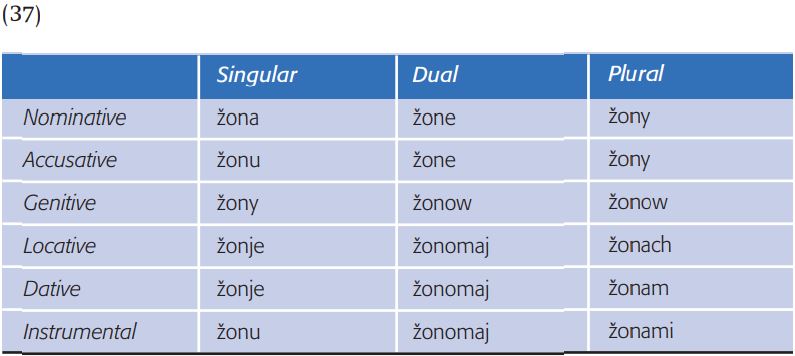
Suppletion and syncretism
 المؤلف:
Rochelle Lieber
المؤلف:
Rochelle Lieber
 المصدر:
Introducing Morphology
المصدر:
Introducing Morphology
 الجزء والصفحة:
105-6
الجزء والصفحة:
105-6
 21-1-2022
21-1-2022
 2310
2310
Suppletion and syncretism
Suppletion and syncretism are terms that refer to relationships between inflected forms in a paradigm. Suppletion occurs when one or more of the inflected forms of a lexeme is built on a base that bears no relationship to the base of other members of the paradigm. Consider, for example, the verb go in English. In the present tense the base is go, of course: I, you, we, they go; he/she/it goes. The progressive participle is going, and the past participle gone, both built on the base go as well. The past tense of go, however, is a suppletive form went – that is, a base that is completely different from that of all the other forms. The Latin verb ferō is notorious for its suppletive forms. Its present stem is fer (so, for example, the first person plural form is ferimus). However, its past tense forms are built on the stem tul-, and some of its participles are built on yet a third stem lāt.
Syncretism is another relationship we can find between the members of a paradigm, specifically one in which two or more ‘cells’ in our inflectional grid or table are filled with precisely the same form. Consider, for example, the Old English verb paradigm we looked at earlier (repeated here for convenience):

Although there are distinct forms for first, second, and third person in the singular, the same form is used for all three persons in the plural. These forms display syncretism. Another, more complex example of syncretism comes from the noun paradigms of a West Slavic language, Sorbian, spoken in parts of Germany.

The chart (37) illustrates the paradigm for the noun ‘woman’. You can see that in the singular the accusative and instrumental cases are syncretic – they have exactly the same inflectional form – as are the dative and locative cases.4 In the dual, nominative and accusative are syncretic, as are locative, dative, and instrumental. And in the plural, nominative and accusative are syncretic as well. Morphologists are interested in seeing if there are any patterns to syncretism across languages – for example, is it more typical in languages for plural forms of verbs to be syncretic than singular forms? Or is it more common for nominative and accusative forms of nouns to be syncretic than, say nominative and dative? As yet there is no definitive answer to these questions.
 الاكثر قراءة في Morphology
الاكثر قراءة في Morphology
 اخر الاخبار
اخر الاخبار
اخبار العتبة العباسية المقدسة


